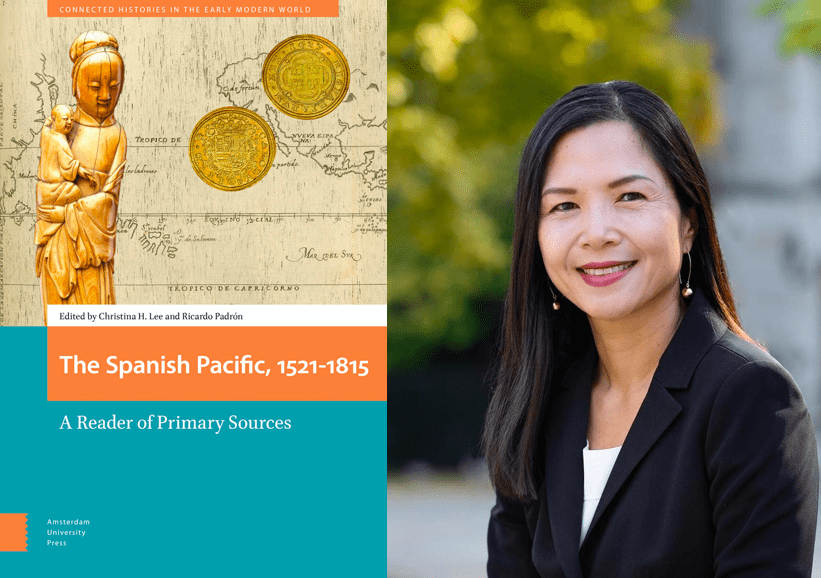Christina Lee is Associate Professor in the Department of Spanish and Portuguese. “The Spanish Pacific, 1521-1815: A Reader of Primary Sources” was co-edited by Ricardo Padrón, Associate Professor of Spanish, University of Virginia, and published in March 2020 by Amsterdam University Press. This retrospective Q&A is part of an effort to acknowledge all the wonderful books published early in the pandemic.
How did you get the idea for this project?
In 2017, I was in the process of organizing an international workshop at Princeton that aimed at bringing together a group of scholars from all over the world who were working on the emerging field of what Ricardo Padrón and I were beginning to recognize as “the Spanish Pacific.” One of the first scholars I contacted to discuss the workshop, historian Vicente Rafael, suggested that we think of a concrete product that would come out from the workshop and that would be beneficial for the field. It seemed quite evident that what the field needed was a reader of primary sources (in Spanish, indigenous languages, Chinese, ladino, etc.) in English translation that could be used in advanced undergraduate and graduate courses in early modern cultural studies, history, and global studies. Given the collaborative nature of the work, Ricardo Padrón (University of Virginia) and I decided to be the co-editors of the volume. During the workshop, which took place in April of 2018, each one of the invited guests spoke about the context and merits of a text they had chosen for the reader.
How has your project developed or changed throughout the research and writing process?
Unlike other collaborative book projects in which I participated in the past, this one did not deviate much from what was originally proposed. The translation and editorial work was extensive because we wanted to make sure that the approach and the style of the introductions to the texts and the translations were consistent. The goal was to make the texts readable to anyone interested in the subject, but who did not have previous knowledge in the respective field.
What questions for future investigation has the project sparked?
What we realized, as my co-editor and I were working on this project and even after its publication is that there are countless number of younger scholars already working on the connections and entanglements produced during the period in which Spain attempted to territorially and spiritually conquer the Philippines, Guam, Japan, Macau, Taiwan, China, and Indonesia, with differing levels of success. What our project has provided for these scholars is the framework of the “Spanish Pacific” and the confidence that their work is not marginal to a specific field, but rather at the center of very exciting intersectional research. My co-editor and I have also been delighted to see that the reader itself has motivated students to embark in graduate studies because of the interest the possibilities afforded by this field. Our own department has a graduate student whose dissertation is focused on the Chinese-Spanish literary, documentary, and artistic productions that rose from the Spanish ambitions in China and from the movement of Chinese individuals into Spanish ruled territories.
Why should people read this book?
This volume brings awareness to the fact that the way in which we divide the fields along geographical spaces; that is, Latin American, East Asian, Southeast Asian, etc. does not reflect the spatial, socio-political, and cultural constructions of the early modern period. For example, we hope that scholars of the colonial Spanish Atlantic would extend their studies to the Pacific, and especially to the Philippines—an extension of New Spain until 1815—which was of vital importance not only to the flow of silver and luxury goods, but also the transpacific movement of peoples and cultural practices. I hope that our project continues to encourage scholars with more traditional approaches to take more seriously the discourses and material productions that result from Spain’s ambitions and presence in the Spanish Pacific. There are still troves of narratives in manuscript and printed forms and many forms of transculturation that are yet to be examined in this area.
Learn more about other publications by Princeton University faculty in the Humanities by exploring our Faculty Bookshelf.
















